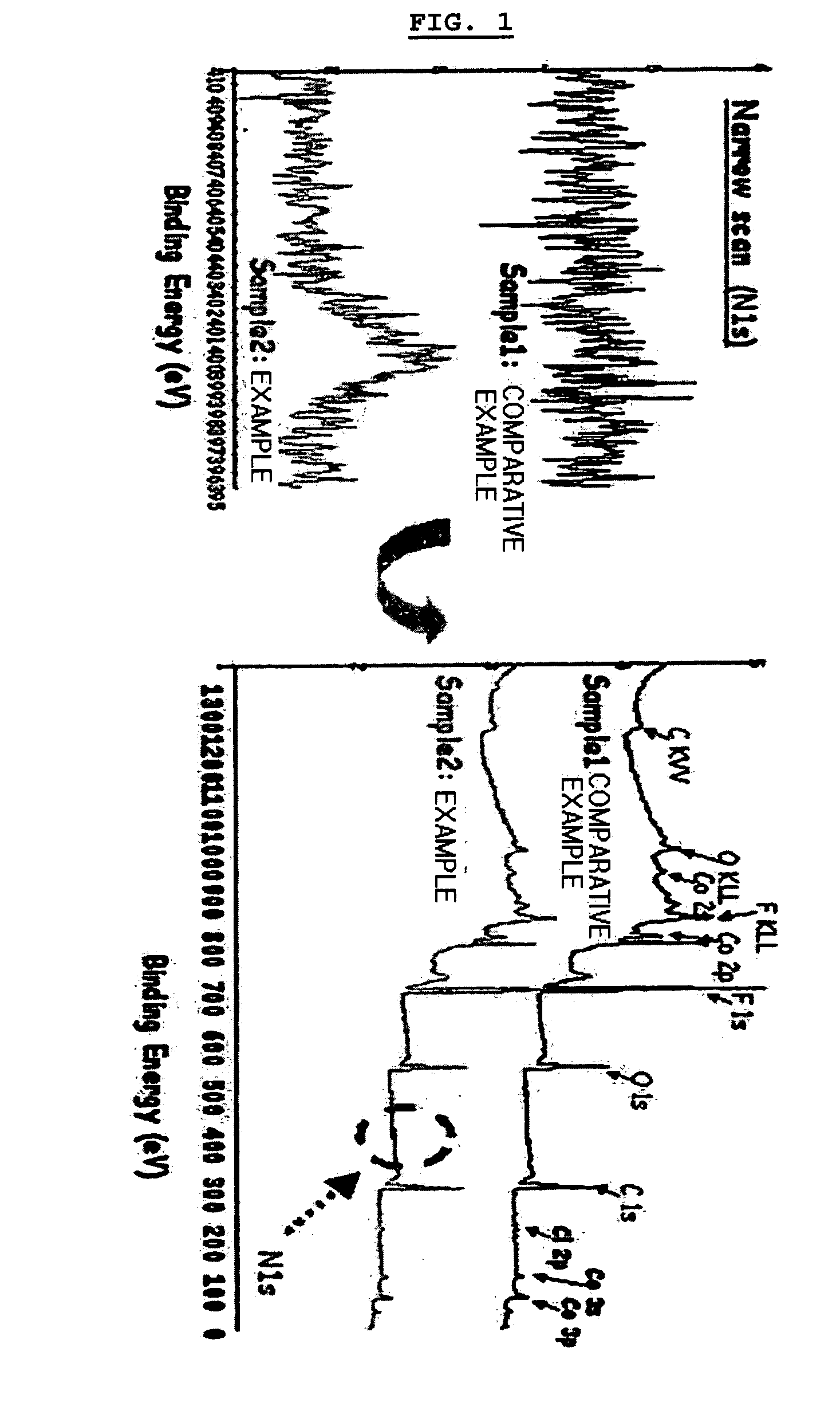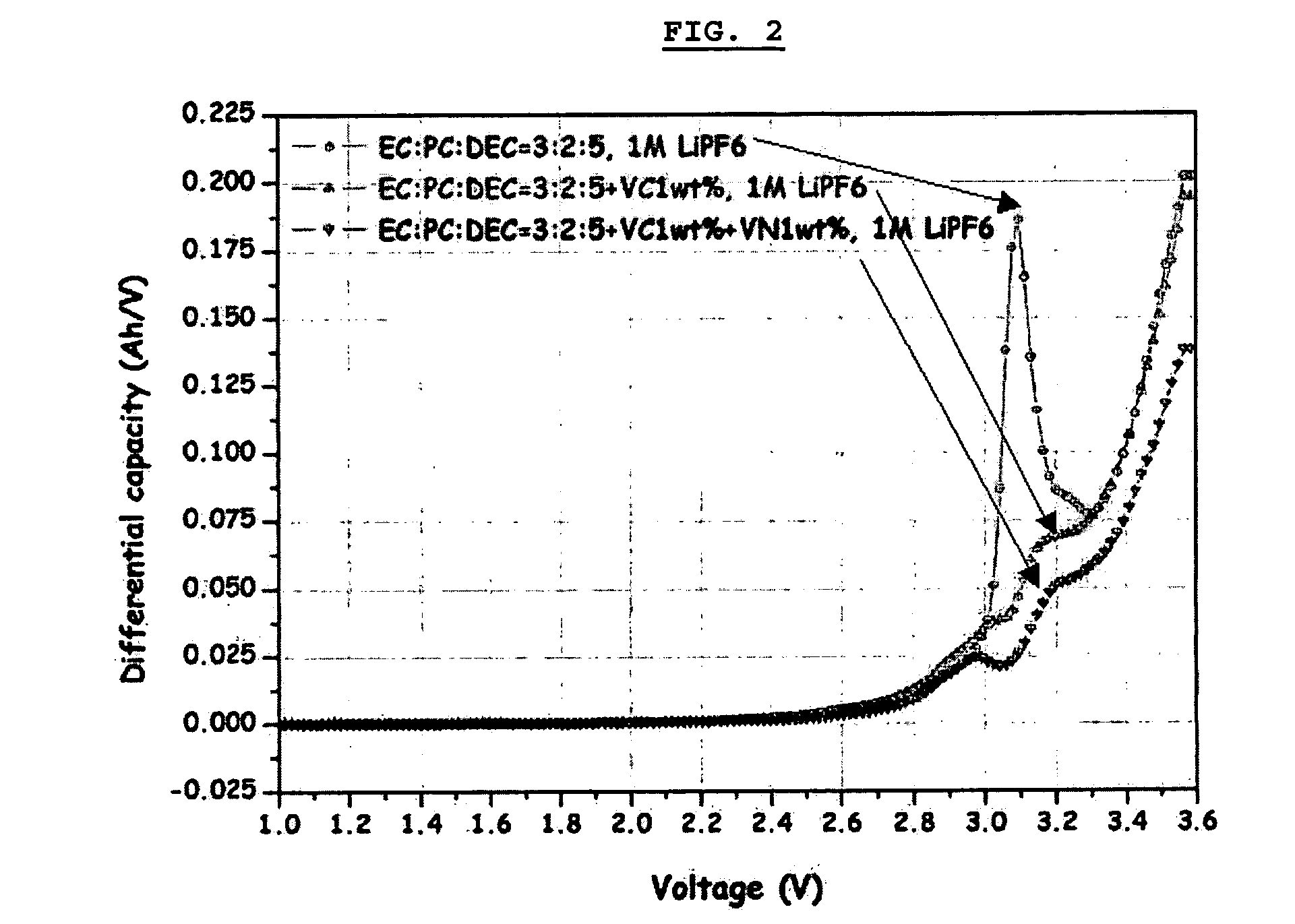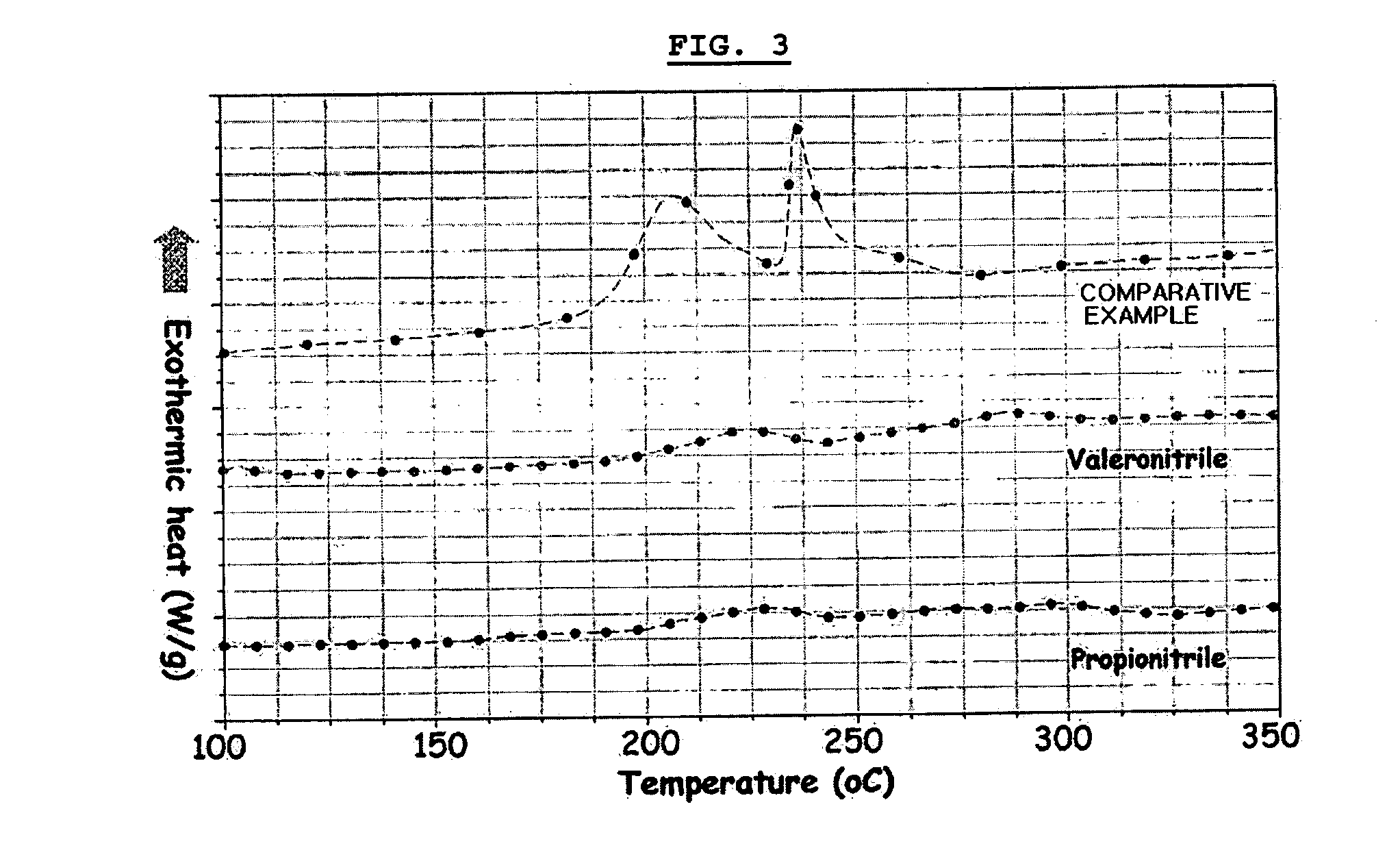Electrochemical device comprising aliphatic mono-nitrile compound
a mononitrile compound and electrochemical technology, applied in the field of cathode, can solve the problems of composite oxide structural collapse, significant drop in battery capacity, and battery capacity drop, and achieve the effects of improving the ion conductivity of the electrolyte, reducing the viscosity of the electrolyte, and improving the safety of the battery
- Summary
- Abstract
- Description
- Claims
- Application Information
AI Technical Summary
Benefits of technology
Problems solved by technology
Method used
Image
Examples
example 1
[0068] The electrolyte used in this example was 1M LiPF6 solution containing EC:PC:DEC=3:2:5. To the electrolyte, 1 wt % of VC, and 3˜5 wt % of valeronitrile were added. Artificial graphite and LiCoO2 were used as an anode active material and a cathode active material, respectively. Then, a 3456-sized lithium polymer battery was manufactured by using a conventional method and the battery was packed with an aluminum laminate pouch to provide a battery pack.
examples 2
[0069] The electrolyte used in this example was 1M LiPF6 solution containing EC:EMC=1:2. To the electrolyte, 1 wt % of VC, and 3˜5 wt % of valeronitrile were added. Artificial graphite and LiCoO2 were used as an anode active material and a cathode active material, respectively. Then, a 3456-sized lithium polymer battery was manufactured by using a conventional method and the battery was packed with an aluminum laminate pouch to provide a battery pack.
example 3
[0070] Example 2 was repeated to provide a lithium polymer battery, except that propionitrile was used instead of valeronitrile.
PUM
| Property | Measurement | Unit |
|---|---|---|
| temperature | aaaaa | aaaaa |
| temperature | aaaaa | aaaaa |
| temperature | aaaaa | aaaaa |
Abstract
Description
Claims
Application Information
 Login to View More
Login to View More - R&D
- Intellectual Property
- Life Sciences
- Materials
- Tech Scout
- Unparalleled Data Quality
- Higher Quality Content
- 60% Fewer Hallucinations
Browse by: Latest US Patents, China's latest patents, Technical Efficacy Thesaurus, Application Domain, Technology Topic, Popular Technical Reports.
© 2025 PatSnap. All rights reserved.Legal|Privacy policy|Modern Slavery Act Transparency Statement|Sitemap|About US| Contact US: help@patsnap.com



